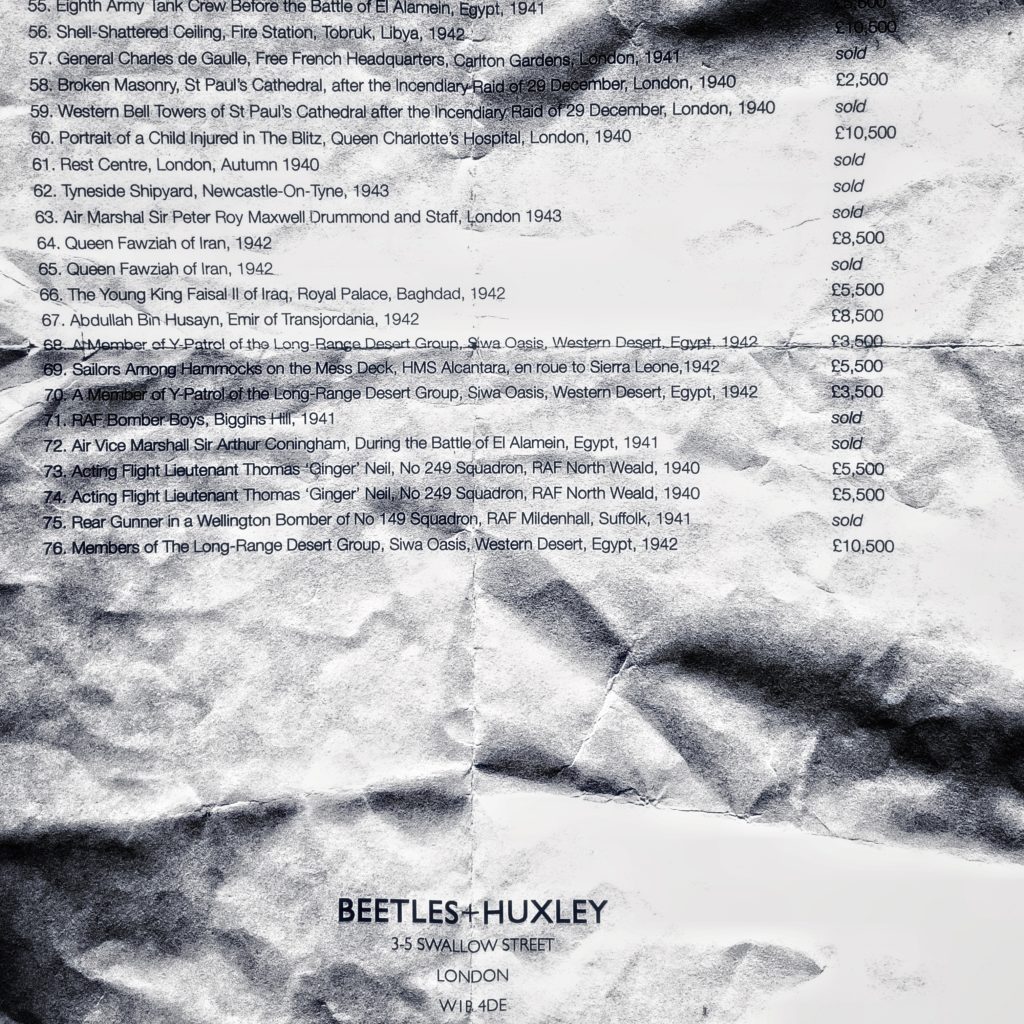Every time I open my laptop, I see a price list of Cecil Beaton’s photographs. A bare printed list of 76 pictures that I saw in an exhibition of his photographs in April, 2017. The folded paper prevents the keyboard imprinting itself on the screen.

The monochrome collection of framed photos ranged from 1929 to 1943 and their presentation was organised to show his style developing over time. The various family, fashion, society, portrait and propaganda shots attest to his refined taste, style and light management skills. He was truly innovative and I’ll point you here if you want to remind yourself of his oevre.
While living and working in London, I used to enjoy dropping into the photography gallery in Swallow Street. I first noticed the gallery in about 2011 on my way to monthly PESGB meetings in The Geological Society, a few hundred paces west along Piccadilly, in Burlington House, also home to the fantabulous diversions of the Royal Academy.
Founded in 1807, some attending the GeolSoc say that Charles Darwin would have used the same urinals as today’s male visitors. A far more important claim to fame is that The Map that Changed the World has been hanging on the stairs for decades. The excellent book by Simon Winchester tells of the origins of the William Smith (1815) hand coloured geological map of England and Wales. The first of their kind and scale, the limited edition maps affected the way people thought of evolution and the age of the planet. The social, economic or industrial impacts were huge, coal mining and building of canals being two of the biggest beneficiaries of the geological insights Smith realised as maps.
Smith’s insights were typical of the way knowledge progresses. He wasn’t really working alone, he was part of a temporal chain. He was standing on giant shoulders and thereby seeing further. Except that Smith was a self taught engineer who learned what he would reveal to the world by digging drains, trenches and canals for a living. His wide ranging travels in England and Wales enabled him to note that certain fossils were common to certain rock types that occurred repeatedly across the land. With this observation, he then chronologically ordered the layers he saw. And then published a novel and complex geological map that was remarkably accurate. When you recall that his travel was by horse and foot, his achievement appears even more incredible.
Stopping into the photographic gallery that today is called Huxley-Parlour is now a virtual option. The website has a great collection of the works by Robert Weston, Vivian Maier and Zhang Kechun that captivated my imagination when I was lucky enough to attend the exhibitions myself.
I’m not a great fan of Beaton’s subjects and certainly not his prices. Come to think of it, looking at the price list again now, it surprised me that 75% of the pictures had already sold. Perhaps this is because the exhibition had a twist of provenance, something that was truly fascinating. All of the pictures for sale were unique. They were prints made at the time and supervised by Beaton. Then they were stored unseen for over half a century. Every one of the prints was conceived before me and none were the worse for their age.
And it was in an early partnership version of the space that I first saw Micheal Kenna’s work framed and on walls. I’ve been back for several Kenna exhibitions because he’s an artist and master craftsman, my favourite photographer to date. A photographer whose minimalist style is achieved through rigorous and masterful printing. One of his most elegant tricks in printing is to use sepia to ever so slightly warm the highlights which creates a near 3D effect, the photographed objects standing out from the generally white backgrounds.
The Huxley-Parlour artist list is here. Look at Kenna and Maier if nothing else. And there are embedded videos by gallery owner Giles Huxley-Parlour.

Leave a Reply